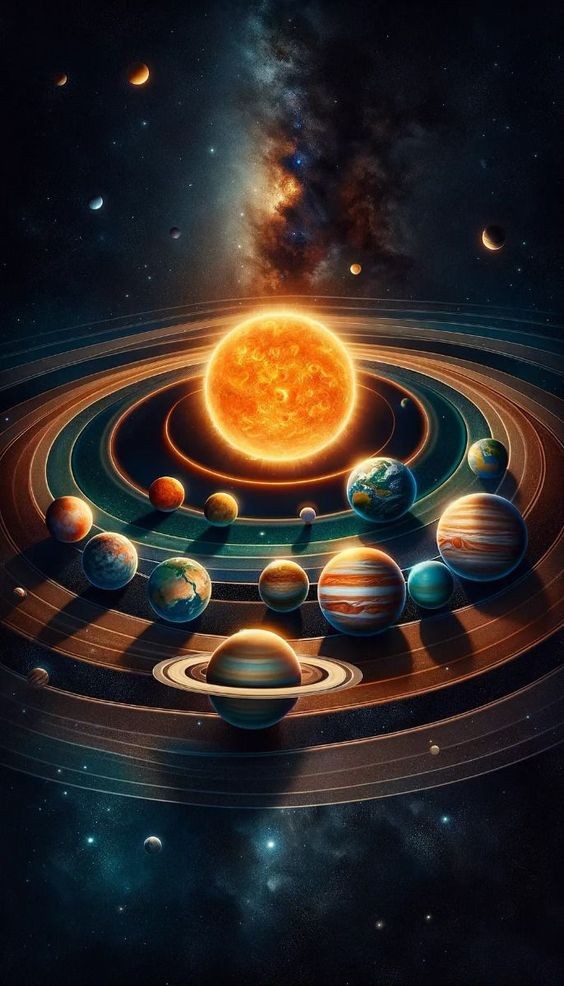Exploring the Solar System: A Guide to Our Cosmic Neighborhood
The solar system is a vast and wondrous expanse that has captivated human curiosity for centuries. From the blazing Sun at its center to the icy fringes of the Kuiper Belt, our cosmic neighborhood is filled with fascinating objects and phenomena. “Exploring the Solar System: A Guide to Our Cosmic Neighborhood” offers an engaging overview of this incredible region, allowing us to better understand the scale and beauty of our place in the universe.
The Solar System: An Overview
At the heart of our solar system lies the Sun, a massive star whose gravitational pull binds together a diverse collection of celestial bodies. These include eight planets, their moons, dwarf planets, asteroids, comets, and various other objects. Each component of our solar system has unique characteristics and plays a role in the intricate dance of celestial mechanics.
The Sun: Our Stellar Anchor
The Sun is the solar system's powerhouse, providing the light and heat necessary for life on Earth. Composed mainly of hydrogen and helium, it generates energy through nuclear fusion at its core. This energy radiates outward, creating solar wind and influencing space weather. Studying the Sun helps scientists understand stellar evolution and the dynamics of other stars in the universe.
The Inner Planets: Rocky Worlds
Mercury: The closest planet to the Sun, Mercury is a small, rocky world with extreme temperature variations. Its surface is heavily cratered, resembling the Moon, and it has a thin atmosphere that offers little protection from solar radiation.
Venus: Often called Earth’s twin due to its similar size and composition, Venus has a thick atmosphere of carbon dioxide and sulfuric acid clouds. This creates a runaway greenhouse effect, making Venus the hottest planet in the solar system.
Earth: Our home planet is the only known world with liquid water on its surface. Earth’s diverse climate, varied landscapes, and dynamic atmosphere make it a unique and habitable environment.
Mars: Known as the Red Planet, Mars features a dusty, reddish surface due to iron oxide. With the tallest volcano and the deepest canyon in the solar system, Mars has intrigued scientists with its potential for past or present life.
The Outer Planets: Gas Giants and Ice Giants
Jupiter: The largest planet in our solar system, Jupiter is a gas giant with a massive magnetic field and dozens of moons. Its most famous feature, the Great Red Spot, is a giant storm that has raged for centuries.
Saturn: Known for its stunning ring system, Saturn is another gas giant with an array of moons. Its rings are composed of ice and rock particles, creating a spectacular sight visible even from Earth with a small telescope.
Uranus: An ice giant with a distinctive blue color due to methane in its atmosphere, Uranus rotates on its side, giving it extreme seasonal variations. Its rings and moons are less prominent than those of Jupiter and Saturn but still intriguing.
Neptune: The farthest planet from the Sun, Neptune is known for its vibrant blue color and strong winds. It has a complex system of rings and moons and was discovered through mathematical predictions rather than direct observation.
Dwarf Planets and Small Bodies
Pluto: Once considered the ninth planet, Pluto is now classified as a dwarf planet. Located in the Kuiper Belt, its orbit is highly inclined and eccentric, and it has a thin atmosphere that expands and contracts with its orbit.
Eris: Another dwarf planet, Eris, is located in the scattered disk region beyond the Kuiper Belt. Its discovery has contributed to the ongoing debate about the definition of a planet.
Ceres: The largest object in the asteroid belt between Mars and Jupiter, Ceres is also classified as a dwarf planet. It has a surface with bright spots that are thought to be deposits of sodium carbonate.
Comets and Asteroids: Comets are icy bodies that release gas and dust, forming a glowing coma and tail when they approach the Sun. Asteroids, mostly found in the asteroid belt, are rocky remnants from the early solar system.
Exploring the Solar System
Understanding our solar system helps scientists learn more about the formation and evolution of planetary systems across the galaxy. Space missions, such as those by NASA and ESA, have provided valuable data about these celestial objects. Robotic spacecraft like Voyager, Cassini, and New Horizons have explored distant regions, while missions like Mars Rover and the James Webb Space Telescope continue to unveil new insights.
The Future of Exploration
As technology advances, future missions will continue to expand our knowledge of the solar system. Upcoming projects, such as the Artemis program aiming to return humans to the Moon and future missions to Mars, promise to deepen our understanding of our cosmic neighborhood and potentially pave the way for human exploration beyond Earth.
Conclusion
"Exploring the Solar System: A Guide to Our Cosmic Neighborhood" reveals the wonders of our solar system, from the blazing Sun to the icy edges of the Kuiper Belt. Each planet, moon, and small body offers a unique glimpse into the complexities and beauty of our celestial home. As we continue to explore and discover, we gain a greater appreciation for the intricate tapestry of our cosmic neighborhood and our place within it.






